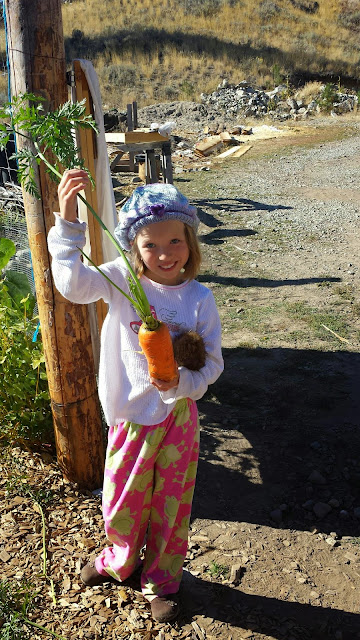Once upon a time, our friend John came to visit for Thanksgiving. He was working on an organic farm and brought along a honeyboat squash to share. As soon as I ate it, I knew it was the ultimate squash.
We saved seeds from the honeyboat, in an attempt to grow some ourselves. The plant was vigorous and the blossoms were so beautiful that they attracted fairies to the garden.
Unfortunately, the squash from which we saved the seeds had hybridized with a neighboring plant, and the fruit (below) tasted, well... borderline edible. Fawn and I learned an important lesson about seed saving and hybridizing that year!
Despite its lack of service on the dinner table, the hybrid squash plant was gorgeous, and we especially enjoyed the twisty spiral tendrils that year. However, it is always even better if we can eat food from the plants we grow.
This past growing season I decided to buy honeyboat seeds,
and it was worth every penny.
I'm pretty sure I will never need to grow another variety of squash again!
Here's why:
Honeyboat squash is a wonderful addition to any meal,
but it's also sweet enough to eat for dessert!
Halved, it fits perfectly in my 7x11" baking pan, which fits in my convection toaster oven. This size makes them naturally "individually packaged," meaning that you are not faced with a big squash project after cutting one open.
You can see from the oblong shape and stripes that it's a delicata-type squash.
Note that it still tastes great even when marred by rodents, which all of my squashes and pumpkins were. As a result my harvest may not live up to its storage reputation this year... so I'm enjoying them now.
It's easy to separate the seeds from the flesh, by pulling the
seeds out with a spoon before scraping the insides clean...
...and they are delicious toasted in the cast iron skillet with a little salt and olive oil!
(not to mention the seeds provide great fatty acids, protein, Vitamin K, iron, phosphorus, etc. for your body to use)
You have to admit, it does look like a honey boat (dugout style).
Being a winter squash, I'm guessing it is a good source of:
• Vitamin A (super duper)
• Vitamin C
• Potassium
• Manganese
• Vitamin E
• Vitamin B complex
• Calcium
• Magnesium
• Vitamin C
• Potassium
• Manganese
• Vitamin E
• Vitamin B complex
• Calcium
• Magnesium
• Iron
• Fiber
and lots more excellent nutrients
Even though our first attempt to grow honeyboat didn't work out for eating (due to hybridization of the saved seed), I'm super glad we tried. Otherwise I might have missed seeing this fairy as she soaked up the beauty of the blossoms. The experience also helped build a foundation for Fawn's understanding of plant reproduction, and sparked her investigation of potential hybridization of other plants, which she did as part of her Grade 3 home study curriculum.
I'm very happy with this variety of winter squash, so I thought I'd share some of the reasons why. I tried honeybear the growing season before last and it was good, but honeyboat still takes the cake for me.
Thank you so much, John E, for introducing us to this fantastic garden food!
What is your favorite winter squash?


















